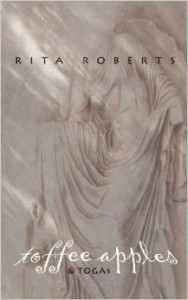Lynne Gentry's Blog, page 6
September 5, 2014
JOURNEYS FOR THE DIRECTIONALLY CHALLENGED
No one ever lets me read the map. I just don’t get it. All those zig-zag lines make my eyes cross. I’d rather just pack up the car and start out. Exciting as freewheeling sounds, I must confess I have ended up in some scary places. With no idea of how I got there or how to get home.
The writing journey I’ve been traveling these last ten years has tossed me a few surprise curves. A few dead ends. A few terrifying moments. But a bunch of blessings as well. One of the best surprises is the friends I’ve made along the way. Fellow travelers writing stories they hope will bring light to the journeys of others.
Next weekend (September 13-14), I am blessed to be part of an event that celebrates our JOURNEYS. If you live in the Memphis, TN area come join me, Kellie Coates Gilbert, Lisa Wingate, Elizabeth Ludwig, and Julie Perkins Cantrell at Highland Church. It’s not too late to sign up.
Don’t get lost. Follow these instructions:
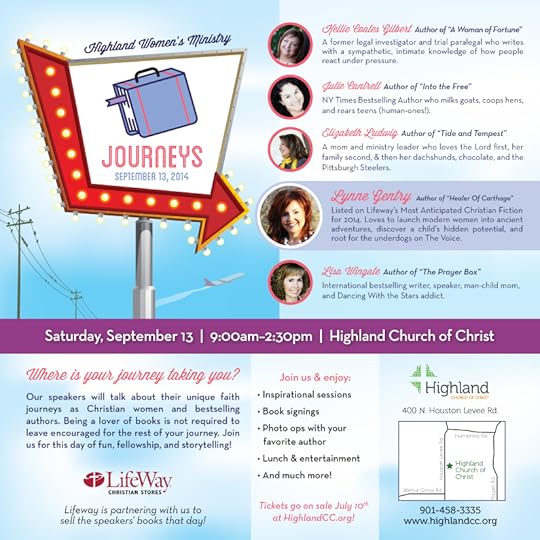
Journeys Event
September 3, 2014
The Unsinkable Ane Mulligan
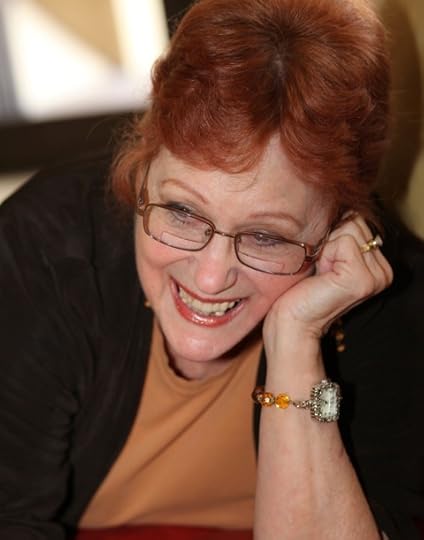
Author Ane Mulligan
I’m excited today to introduce my readers to an author I met years ago. I heard Ane Mulligan’s infectious laugh before I managed to locate her in the large crowd of writers. We were immediately drawn to each other and soon discovered the reason why. We both loved the theater. I can’t wait for you to meet Ane today. You’ll fall in love with her and her new story too.
While a large, floppy straw hat is her favorite, Ane has worn many different ones: hairdresser, legislative affairs director (that’s a fancy name for a lobbyist), drama director, playwright, humor columnist, and novelist. Her lifetime experience provides a plethora of fodder for her Southern-fried fiction (try saying that three times fast). She firmly believes coffee and chocolate are two of the four major food groups. President of the award-winning literary site, Novel Rocket, Ane resides in Suwanee, GA, with her artist husband, her chef son, and two dogs of Biblical proportion.
Chapel Springs is a fictional village in the north Georgia mountains. There I said it. It’s not a real town. Hubs says it lies in Hidden Valley. But it is real to me. So much so, that once I had my “what if” for the main plot, I drew a detailed map and populated the town with fun characters. I’m a visual writer and the printed map, photos of my characters, their homes and businesses are on a corkboard in my office.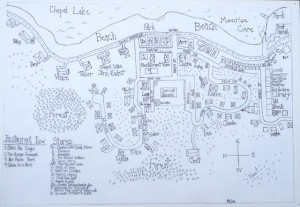 I set the town on Chapel Lake, and yes, it’s fictional, too. That way I wouldn’t have to worry about somebody saying there isn’t a boat launch in Moonrise Cove, nor an I bound by a library in the spot I want my protagonist’s home to be. When it came to my book cover, my husband agreed to paint it, but he had a hard time pulling it out of my imagination. So I looked online, printed dozens of pictures out, telling him, “It’s sort of like this but not exactly.” Poor man. But in the end, he created what is better than I’d imagined. I love the painting and the cover. Between my hubs and Deb Raney’s hubby, Ken, I’ve got a one-of-a-kind cover.
I set the town on Chapel Lake, and yes, it’s fictional, too. That way I wouldn’t have to worry about somebody saying there isn’t a boat launch in Moonrise Cove, nor an I bound by a library in the spot I want my protagonist’s home to be. When it came to my book cover, my husband agreed to paint it, but he had a hard time pulling it out of my imagination. So I looked online, printed dozens of pictures out, telling him, “It’s sort of like this but not exactly.” Poor man. But in the end, he created what is better than I’d imagined. I love the painting and the cover. Between my hubs and Deb Raney’s hubby, Ken, I’ve got a one-of-a-kind cover.
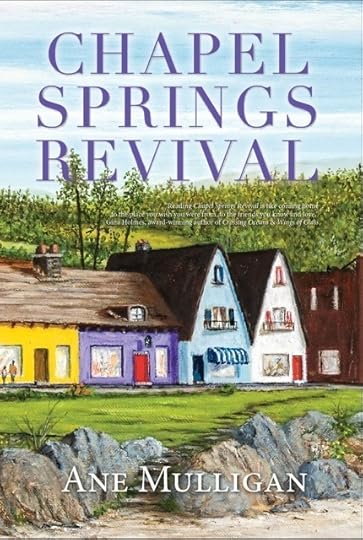 But I had one other problem in writing Chapel Springs Revival. The village needed reviving as well as my main characters’ marriages. And one of the problems was the warm springs, a big tourist draw, had cooled a couple of degrees, and the doctor, and the new spa owner, needed it at optimal warmth for therapy.
But I had one other problem in writing Chapel Springs Revival. The village needed reviving as well as my main characters’ marriages. And one of the problems was the warm springs, a big tourist draw, had cooled a couple of degrees, and the doctor, and the new spa owner, needed it at optimal warmth for therapy.
And so, I merrily began writing.
But I came to a point where Claire talks to a geology professor about what could have happened and how could he fix it. I had to stop to do some research. What I found out rocked my world like a van full of hippies. First of all, warm springs have to be certain temperatures for optimal therapeutic benefits. Because the waters come from deep within the earth, they wouldn’t cool by natural means. Oy vey. I was 56,000 words into a story that was just rendered impossible.
I emailed my authors’ loop, American Christian Fiction Writers, and hollered, “HELP! I need a geologist.” And wouldn’t you know it? I actually found a member whose hubby is a Geo-geek. He told me while highly improbable it was not totally impossible. I clung to his words like Garfield with a pan of lasagna. Geo-geek directed me to some online experts, and one of them gave me the answer I needed. “Sure,” she said. “If blasting had taken place near the right spot, it could absolutely cause enough damming of the flow.” Sweet relief. I had a story again. But I learned to do my research prior to writing over fifty thousand words.
With a friend like Claire, you need a gurney, a mop, and a guardian angel. Everybody in the small town of Chapel Springs, Georgia, knows best friends Claire and Patsy. It’s impossible not to, what with Claire’s zany antics and Patsy’s self-appointed mission to keep her friend out of trouble. And trouble abounds. Chapel Springs has grown dilapidated and the tourist trade has slackened. With their livelihoods threatened, they join forces to revitalize the town. No one could have guessed the real issue needing restoration is personal. With their marriages in as much disarray as the town, Claire and Patsy embark on a mission of mishaps and miscommunication, determined to restore warmth to Chapel Springs —and their lives. That is if they can convince their husbands and the town council, led by two curmudgeons who would prefer to see Chapel Springs left in the fifties and closed to traffic.
August 4, 2014
EBOLA IN THE U.S.
Deadly viruses fascinate me.

Ebola virus
I’ve been following very closely the progress of Ebola sufferer, Dr. Kent Brantley who was my daughter’s TA in college. I am praying for his recovery.
Tonight, I heard the news that it is possible a new case of Ebola has presented in New York City.
Ebola on American soil. A virus with no known vaccine or cure.
I confess it made me nervous when they brought Dr. Brantley to the States. But with this possible case of Ebola in New York, I feel a sense of panic.
I guess my fear stems from reading so many gruesome accounts of what happened in Carthage in the third century. At one point, the deadly plague that swept through the Roman Empire centuries ago killed an estimated 5,000 people a day. What if something just as deadly struck us today?
Is there a Dr. Lisbeth Hastings to save the day?
According to an article published Sunday in the Dallas Morning News, Seema Yasmin there is. They are the CDC’s disease detectives. These epidemic intelligence service officers are a group of young physicians, nurses, and scientists who are trained to investigate outbreaks around the world. They wear special vests, suits, and face shields. Most impressive of all, they run toward disease and death when everyone else is running away.
Ms. Yasmin says it’s not just the virus they’re up against. They are also fighting poverty, misinformation, and fear … the very same things Christians were facing in the third century.
When I think about that brave group of people back in Cyprian’s day, I wonder … would I have run toward the need to help others or would I have been one of those who fled to their summer homes in the mountains?
I’d like to think myself as brave as those 3rd century Christians … then again, I hope I never have to find out.
What would you do?
July 7, 2014
Writer’s On Tour
My writing partner, KELLIE COATES GILBERT invited me to join a Writer’s Blog Tour. So, I thought it would be fun to showcase one of my new favorite historical writers, a writer friend I met once, but have come to admire from afar.

ELIZABETH LUDWIG
ELIZABETH LUDWIG is a sweet as she is gifted. I can’t wait for you to meet her and find out about her most recent release,
TIDE AND TEMPEST.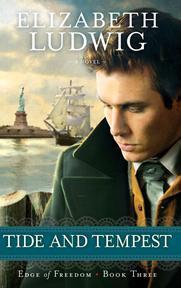 So here’s how the blog roll works. Both Elizabeth and I will take turns answering the blog questions and then we thought it would be fun to do a book give-away. Here we go …
So here’s how the blog roll works. Both Elizabeth and I will take turns answering the blog questions and then we thought it would be fun to do a book give-away. Here we go …
1. Elizabeth what are you working on?
I’m one of those people who always say they need to cut back on the number of projects they have going and never does! I mean, I do cut back, but then immediately fill the slot with something else. LOL!
Right now, I’m marketing my newest historical suspense from Bethany House Publishers called Tide and Tempest. I’m also polishing up the revisions for a Christmas story coming out in September from Barbour Publishing called, Christmas Comes to Bethlehem, Maine and plotting a series of mysteries for Guideposts called Sugarcreek Secrets. It’s a lot of work juggling so many different projects, but the simple truth is, if I’m not busy, I don’t feel productive. It’s a vicious cycle… 
1. Lynne, what are you working on?
Like my grandmother used to say, “I’m busier than a one-armed paper hanger.” Marketing HEALER OF CARTHAGE, editing RETURN TO EXILE, writing VALLEY OF DECISION, plus getting geared up for the big author gig Elizabeth and I are blessed to be a part of in Memphis on September 13.
2. Elizabeth, how does your work differ from others of its genre?
My stories always have a splash of mystery or a splattering of suspense. Seriously. I tried to write a straight historical romance once, and a third of the way through, I killed off one of the main characters. It’s like I have to put action on every page or it feels like there’s just not enough happening. Which, when I think about it, makes sense given that I live my life at 100mph and only slow down when I’m forced to go to sleep (see answer above). LOL!
2. Lynne, how does your work differ from others of its genre?
Elizabeth, I think people should be very afraid when we get together because I too love to kill off characters. My stories always have action and high-stakes. But they differ in that it is very difficult to pin time travel, historical, romance into one genre.
3. Elizabeth, why do you write what you do?
My reasons for writing have changed over the years. At first, it was simply to satisfy a dream. That quickly morphed into something I never expected—a desire to give people hope. Writing inspirational fiction allows me to spread the gospel in a way that speaks to Christians and non-Christians alike, because people who might not sit through a sermon have no problem sitting through a good book. Plus, it enables me to prove what I’ve claimed all along—that fiction doesn’t have to be foul to find an audience. I was tired of the books I’d been reading before I came to Christ. I wanted something uplifting, romantic, exciting, but wholesome, too! That’s what I hope I offer to readers.
3. Lynne, why do you write what you do?
Elizabeth, your answer to this makes me smile. I so understand what you are saying. At first, I wrote because I thought the Lord had put a desire in my heart to change the world, make it a better place. But as my stories began to take shape, I realized God was using the process of writing to change me, mold me into a better person. I had always wanted to be brave, adventuresome, and fearless in my faith, but sadly I was a coward at heart. Writing has changed me. I can’t say that I’ve matured to the point that I’d relish the idea of charging into the face of impossible odds, but I have learned that even when the worst possible thing happens, greater is He who is in me than He who is in the world.
4. Elizabeth, how does your writing process work?
Hello. My name is Elizabeth Ludwig, and I am a daydreamer. There. I’ve admitted it.
I will usually daydream about the characters in my books for weeks before I ever write the first chapter. That’s because I need to be able to see them in my head, hear how they talk and learn how they act before I can begin to write their story. Then, once I have a clear picture of the characters, I start plotting out the story. That means charting out a detailed timeline from start to finish. I also search for photos, locate maps, make drawings of certain settings, and collect samples of historical details that I can incorporate. Only when all of that is finished do feel equipped enough to begin writing. It makes for a lengthier process, but I’m always satisfied when I finish that I did my best to make the story accurate and exciting.
4. Lynne, how does your writing process work?
Here’s where Elizabeth and I part ways drastically. My stories usually come to me via a unique, quirky piece of information. For example, HEALER OF CARTHAGE is the result of a newspaper article and eavesdropping upon a conversation. I jump into the research, which I absolutely adore, and from there pieces of the plot fall into place. Then slowly, even as I’m writing, the characters come to me. I love how God uses all sorts of different gifts and skill sets to accomplish His purpose.
Thank you for joining us, Elizabeth! I’ve learned so many new things about you and your books. And, I’m tickled to introduce you to my readers.
You can learn more about Elizabeth and check out all her books at her website.
To follow the blog tour and learn the gritty details of more behind-the-scenes writer-lives, visit Kellie Coates Gilbert’s post last week on Southern Belle View or Amish writer Elizabeth Byler Younts next Monday. Elizabeth Ludwig will also host an author of her choice next week.
Writer Girls Blog Tour Giveaway!
In celebration of the blog tour, we’re giving away one copy of HEALER OF CARTHAGE and one copy of TIDE AND TEMPEST, two stories that will capture your heart. To enter, leave a comment answering the question of the day. I’ll announce a winner back here in the comments on Tuesday morning at eight o’clock am!
Question of the day: Elizabeth and I like to write about unusual historical events. Tell us – what historical event would you like to relive?
June 17, 2014
Remains of ‘end of the world’ epidemic found in ancient Egypt
BIG NEWS readers.
Today Fox News shared an article posted in LIVE SCIENCE by Owen Jarus. Archaeologists have uncovered evidence in Egypt of the third century A.D. plague that nearly destroyed the Roman Empire. And guess what? The article talks about the PLAGUE OF CYPRIAN.
I love it when FACT is stranger than FICTION.
Check out this link to read all about the mass graves at the Funerary Complex of Harwa and Akhimenru in the west bank of the ancient city of Thebes (modern-day Luxor) in Egypt.
June 11, 2014
Dig until you unearth an expert
Research is the life blood of historical writers. I love to dig through history books and internet sites. The effort often yields all sorts of wonderful surprises. I accidentally discovered a secret treasure while doing research on ancient burial urns for my first eshort prequel, A PERFECT FIT.

Eshort Prequel to
HEALER OF CARTHAGE
I have Roman boards set up on Pinterest and I noticed I kept trading pins with a retired archaeologist from Crete. I Googled her, found her blog site, and bravely asked for her help. It has been the beginning of what I hope becomes a wonderful friendship. I’m excited to introduce my readers to the fascinating Rita Roberts, a Roman antiquities expert.
Tell us about yourself, Rita:

Rita Roberts
I was born in Birmingham, England and educated in state schools, leaving secondary education at the age of fifteen. During World War II I was evacuated from St. Thomas school to the country where I was cared for by a local family.
Looking back to my childhood days I remember my mother always telling me to hold my head up or I would look like a bent up old lady before I was much older. I think this must have been the first indication of my becoming an archaeologist because I was always look down on the ground searching for anything I could find. On the days we visited my Grandma’s I was anxious to go out to the back of her house as there was a huge open area where I spent happy hours searching for anything I could find, bits of pot or tile that I thought looked interesting, there was the occasional glass marbles and old glass bottles which had a marble in the top. Does anyone remember these bottles called “Cadswallup” bottles? I did once find a watch and a nice brooch in the shape of a butterfly.
Some of the things I found I kept hidden in a box and put them in my small wardrobe. They were my little treasures until my mother found them and threw them all away saying that they were rubbish. But now, that so called rubbish may have been of archaeological or antique interest. When out walking, I still keep my now trained eye open for anything which seems of interest such as unusually shaped stone or flint objects that maybe tools of the past.
Share a bit about Roman pottery:
It is the durability of pottery which makes it so important to archaeologists.
Pottery, or ceramic, consists of clay that has been chemically changed and hardened using heat to drive out the water present in the molecules. If the clay has been properly fired, it will hold water and will not soften. If, however, imperfectly fired, the clay will revert back to its liquid state on contact with water or anything wet.
A range of orange and red-brown wares were produced along the middle Severn Valley and distributed across western and northern Britain from the 2nd to 4th century A.D. Storage jars were produced, bead rim jars, bowls, and wide mouth jars, tankards, flanged bowls, dishes and platters. Surfaces were sometimes decorated with lenear or lattice zones.
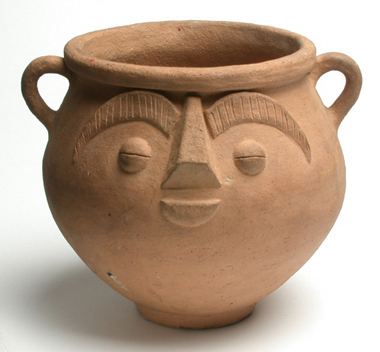 Pots were also made for burial like this face pot.
Pots were also made for burial like this face pot.
Thanks, Rita. In my next book, RETURN TO EXILE, one of my favorite characters dies and I will need a burial urn.
Readers, if you want to know more about Roman pottery, check out Rita’s blog and her book,
She is also an expert on Roman recipes and we are going to pick her brain about that, so come hungry.
June 8, 2014
Next Best Thing to Being There
What’s a historical/time travel writer to do when she can’t go back in time to do hands-on research?
Google it!
Since so much of The Carthage Chronicles series investigates Christian persecution in the arena, I became hungry to know more about the Colosseum. What I’ve learned so far is that the Romans were amazing engineers. Bits and pieces of the incredible entertainment structures they constructed remain to this day. Nowhere is their expertise more evident than in the colosseums they built around the empire. I wanted to share this amazing National Geographic special and the new time scanner laser technology that gives us so many clues into the brilliance and barbarism of these ancient people.
So how do you think the Romans accomplished so much?
June 1, 2014
Thumbs Up or Thumbs Down?
Raise your hand if you have given directions over the phone and used your hands to tell the person on the other end which way to go.
Gesturing is an ancient form of non-verbal communication. Some scholars believe the use of hand signals dates back to the Romans. For example, when we think something is good, we give it a “thumbs up.” That signal originally came from the Roman arena. Wounded gladiators lived or died based on an emperor’s simple hand gesture.
In gladiator movies the thumbs up means the gladiator lives to fight another day.
However, according to this ancient text it was just the opposite:
These men once were horn-blowers and attendants At every municipal arena, known as trumpeters in every village. Now they present their own spectacles, and, to win applause, Kill whomever the mob gives the “thumbs up”. Decimus Junius Juvenalis; a.k.a. Juvenal (c. 55-140 A.D.), “Third Satire”
Our reverse interpretation of this custom was the result of the work of the French artist Léon Gérôme who apparently understood the Latin verso (“turned”) to mean “turned down”, and therefore in his painting Pollice Verso (1873), he presents the death sentence with the thumbs-down gesture. The painting became so popular that Gérôme’s mistake became the accepted interpretation and it is unlikely that it will ever be changed back to the meaning that it had with the Romans. Scholars before Gérôme gave support to the view that “thumbs down” among the Romans, meant the hapless gladiator was to be spared, not slain.
Gestures that insult, beg and swear offer a window into Roman culture. As a writer who loves to move characters around, I thought this video was fun to watch and learn gestures as old as the Roman Empire.
Can you talk without using their hands?
May 27, 2014
Everything I know about time travel I learned in Sunday School
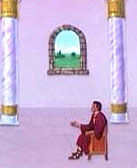
Remember flannelgraphs?
My third-grade Sunday school teacher inspired my time travel tendencies. Rosie Cass could tell nail-biting stories while recreating the ancient world of Jesus with her magical flannel graph set. According to Rosie, Mary and Joseph didn’t travel to Bethlehem. Oppressive Romans forced the couple to make the harrowing journey. Jesus didn’t die an easy death. Romans beat the Savior and nailed him to a cross. When Rosie spoke, I could taste the dust and hear the ring of the hammer. Rosie’s tales immediately transported me to the days when Rome owned the world.
Rosie’s flannel pieces were returned to the box long ago. But my imagination lingers in the past, contemplating the fears and feelings of those who lived before me. I’ve spent hours digging through books on Rome and the struggles of the early church.
Did you know that third-century Christians faced not only the worst persecution in history but also a deadly plague? And even more fascinating, did you know that in the ancient port city of Carthage persecuted Christians organized health care and saved the empire?
Like you, I wondered how Christians could offer care to the same people who were determined to have them exterminated. The only way to know the truth was to send a time traveler to investigate.
When Dr. Lisbeth Hastings was chosen for this mission, she wasn’t keen on the idea. In fact, I sort of pushed her through the portal.
Lisbeth is a brilliant, first-year medical intern, who counts science as her god. Like most young doctors she’s full of angst. The thing that keeps her up at night is the possibility that she’ll screw up and kill someone. As you can imagine, facing a deadly epidemic is terrifying. Especially since I sent her to the third-century armed with only her wits, a few homeopathic remedies, and her mother’s stethoscope.
Wearing third-century clothes, Lisbeth watches as the plague becomes an equalizer of rank and religion. What isn’t equal is the populace’s response. The pagans won’t even take time to carry their dead to the street. The Christians carry the dying into their homes. While soldiers march the cobblestones searching for anyone refusing to worship the gods of Rome, Lisbeth goes from bed to bed trying to stop the feverish rash. Although Lisbeth is not a Christian, their fears become hers. Outnumbered, outranked, and out of time, she witnesses incredible acts of bravery as well as cowardly betrayals.
If the hand of God is upon this pivotal moment in history, is the hand of God upon the time traveler, Dr. Lisbeth Hastings?
Want to know what really happened in Carthage? You’ll have to time travel to the third century because you won’t hear this story in Sunday school.
May 10, 2014
STORIES INSPIRED BY REAL LIFE
 Rome was founded on the virtues of faith, family, and freedom. Every life was considered valuable. I believe forsaking those virtues brought about the end of what had once been the greatest empire the world had ever seen. Could the same happen to us today?
Rome was founded on the virtues of faith, family, and freedom. Every life was considered valuable. I believe forsaking those virtues brought about the end of what had once been the greatest empire the world had ever seen. Could the same happen to us today?
That’s why the values my mother instilled in me before she passed away appear in my stories … I believe every life has value.
FIVE things I learned from my mother:
1. Life can throw you unexpected curves.
2. Life doesn’t always go your way.
3. Life is better when its shared.
4. Life is worth living.
5. Life is a gift.
I pray this video inspires you the same way my mom’s life continues to inspire me.
Here’s to mothers everywhere and the influence they wield.
What is one of the values you treasure?

